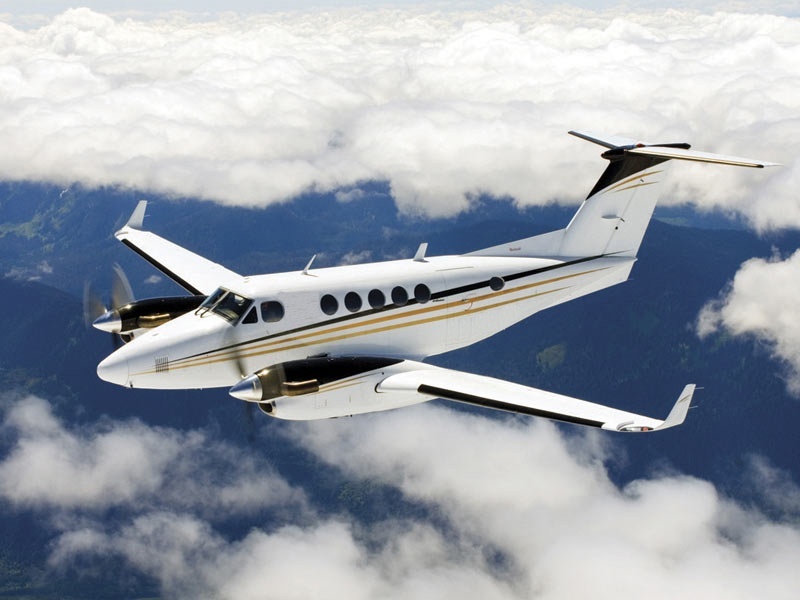King Air B200
Beechcraft’s King Air B200, first delivered in 1981, is a single-pilot certified turboprop that succeeded the original King Air 200. The B200 was equipped with more powerful, more efficient Pratt & Whitney Canada PT6A-42 engines, giving it a cruise speed of about 275 knots, 35 knots faster than the King Air 200, and reducing its operational costs by a significant margin.
King Air B200C
During the same year the B200 began production, Beechcraft also began production of the B200C. The B200C is simply a King Air B200 with a large airstair-equipped cargo door on the side of the rear fuselage.
King Air B200T
In 1982, Beechcraft moved forward with a version of the B200 created for aerial surveillance and reconnaissance, naming it the B200T. Beechcraft equipped the original B200 with modifications to the belly aft of the wing to allow photography, equipment for a surveillance radar beneath the fuselage, dome-shaped windows near the rear of the aircraft to allow observation below, and 50-gallon fuel tanks on the aircraft’s wingtips to increase its range.
[ulp id=’xkA7bnsbSMSAnwAm’]
King Air B200CT
Though only a few were made, Beechcraft converted a number of B200Cs with cargo doors to B200CTs, adding wingtip fuel tanks to increase the range of the aircraft. Each of the B200CT models were converted from B200Cs and given new serial numbers.
King Air B200SE
In 1995, Beechcraft decided to update the B200’s avionics system with Electronic Flight Instrument System (EFIS) avionics, dubbing the new model with upgraded avionics the B200SE (Special Edition). In 2004, Beechcraft began to equip each of the B200 models with Collins ProLine 21 avionics, as opposed to the older Dual Collins ProLine systems found on earlier models.
King Air B200GT
In 2008, Beechcraft moved forward with the B200GT, upgrading to Pratt & Whitney Canada’s PT6A-52 engines, as opposed to the -42 engines found on the original B200. The GT model has a higher cruise speed (290 knots compared to 275), better runway performance, and handles hot and high conditions better. Although both aircraft can operate at a maximum of 35,000 feet, the B200GT continues to operate at full power at altitudes in the high 20s, while the original B200’s max cruise speed tops out at altitudes in the high teens.
King Air B200CGT
Beechcraft also produced a cargo version of the GT model, naming it the B200CGT. It performs at the same levels as the B200GT, but comes equipped with an airstair-equipped cargo door.
Do you have experience operating the King Air B200 or any of its variants? Let us know in the comments!
For more information on the B200 and other turboprops, check out our Turboprop Buyers’ Guide.

